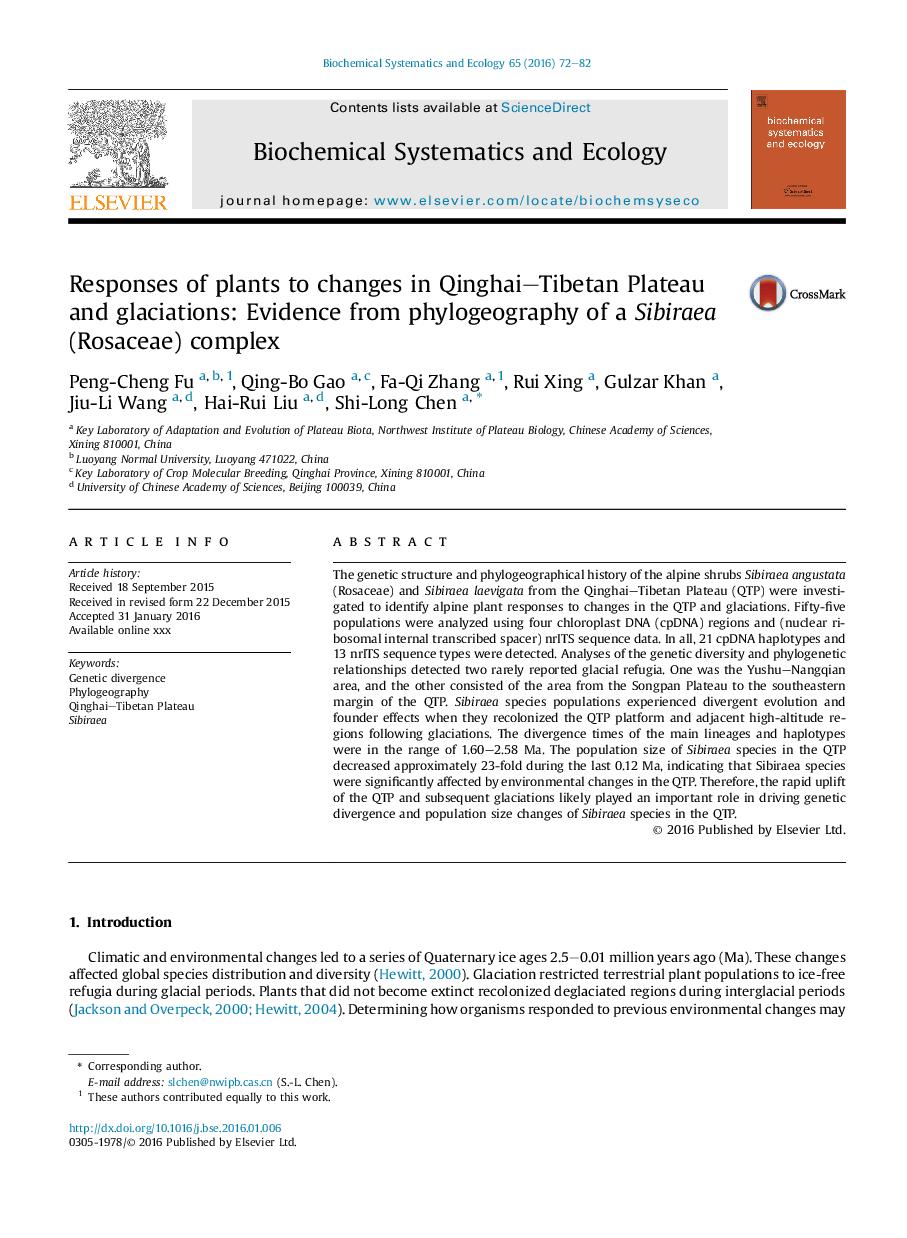| Article ID | Journal | Published Year | Pages | File Type |
|---|---|---|---|---|
| 7767919 | Biochemical Systematics and Ecology | 2016 | 11 Pages |
Abstract
The genetic structure and phylogeographical history of the alpine shrubs Sibiraea angustata (Rosaceae) and Sibiraea laevigata from the Qinghai-Tibetan Plateau (QTP) were investigated to identify alpine plant responses to changes in the QTP and glaciations. Fifty-five populations were analyzed using four chloroplast DNA (cpDNA) regions and (nuclear ribosomal internal transcribed spacer) nrITS sequence data. In all, 21 cpDNA haplotypes and 13 nrITS sequence types were detected. Analyses of the genetic diversity and phylogenetic relationships detected two rarely reported glacial refugia. One was the Yushu-Nangqian area, and the other consisted of the area from the Songpan Plateau to the southeastern margin of the QTP. Sibiraea species populations experienced divergent evolution and founder effects when they recolonized the QTP platform and adjacent high-altitude regions following glaciations. The divergence times of the main lineages and haplotypes were in the range of 1.60-2.58 Ma. The population size of Sibiraea species in the QTP decreased approximately 23-fold during the last 0.12 Ma, indicating that Sibiraea species were significantly affected by environmental changes in the QTP. Therefore, the rapid uplift of the QTP and subsequent glaciations likely played an important role in driving genetic divergence and population size changes of Sibiraea species in the QTP.
Related Topics
Physical Sciences and Engineering
Chemistry
Organic Chemistry
Authors
Peng-Cheng Fu, Qing-Bo Gao, Fa-Qi Zhang, Rui Xing, Gulzar Khan, Jiu-Li Wang, Hai-Rui Liu, Shi-Long Chen,
